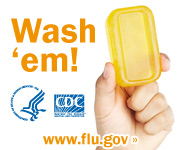At the same time, I'd be oh, so up-to-the-minute in the locavore movement by locally harvesting uncultivated, or foraged, foods (ie. weeds).
"You can use them in gourmet and delicious ways and make really amazing dishes," Iso Rabins, founder of ForageSF, told the San Francisco Chronicle in a story yesterday about the foraged food movement.
But like my hunter-gatherer ancestors, I must have some instinct for danger. I don't know why, but a little voice inside said, "Not so fast," and I decided to do a little digging into the Internet before digging into my yard last week.
Good thing I did. Apparently, many delicious and very healthful weeds have some rather unhealthful -- make that poisonous and potentially deadly -- doppelgangers.
Hello!
Lambs quarters, which I was ready to run out and grab, apparently look pretty similar to deadly nightshade. At this point, I'm expecting some experienced forager or botanist to write me to say, "Puh-leeze! It's easy to tell the difference." I'm sure -- once I get the chance to learn properly what both look like. But I've never knowingly seen nightshade outside of Internet pictures, and I've read accounts of other people making the mistake.
That got me to to thinking that there must be other green treats that an inexperienced forager or gardener could confuse with a dangerous double -- especially as more people I know seem to be into growing and picking their own food. Some of my findings:
Purslane -- A sprawling succulent that contains good nutrients including omega 3 fatty acids.
 |
| Spurge, above, looks like purslane |
Wild carrots, aka Queen Anne's lace -- This pretty and purportedly edible weed has a very evil twin, also in the carrot / parsley family, called poison hemlock. Yep, it's the same thing that killed Socrates. They look enough alike and hemlock is so poisonous that even after I familiarize myself with them, I think I'll steer clear. This spring, a Tacoma, Wash., woman died of apparent hemlock poisoning after putting the plant into a salad, thinking that it was something else, according to a county medical investigator. A Bellingham, Wash., man also was poisoned but survived after picking hemlock from his garden because it looked like one of the vegetables he had planted. Hemlock resembles several members of the same plant group, including parsley and parsnip, and it grows all across the United States.
Ramps -- These wild leeks can resemble the toxic lily of the valley. Similarly, you don't want to mistake death camas for wild onion or wild garlic.
Blue violets -- The leaves and flowers are edible, but the rhizome is poisonous. Poisonous larkspur and monkshood may look similar to violets to some of us city-suburban folk.
Wild grapes -- Don't confuse wild grapes with potentially deadly moonseed.
I could go on and on, but I think I made the point. Don't eat anything unless you are absolutely certain that you know it's safe.
When I was younger, ignorance was bliss, and I didn't know it was potentially dangerous. I used to snack on wild blueberries and strawberries growing in the woods around my home. Where the yard met a bit of open field, I'd chew leaves of sorrel to let the sourness start the juices flowing in my mouth. In the same fields grew beautiful stands of Queen Anne's lace -- aka wild carrot -- or so I thought. Luckily I didn't try it, because I didn't know back then that it could have been hemlock -- aka the last thing I ate.
Nowadays, I highly recommend a bit of education before picking something and popping it into your mouth. Check out the local university extension to find out if there is a plant expert or class you can hook up with to learn about the plants you're interested in before going off on your own to forage.
You may also like:
The Foxfire series of books got me interested in living off the land when I came across them in the late 1970s.
The New York Times' Ava Chin discusses gathering shepherd's purse, a wild member of the mustard family.
New York-based naturalist "Wildman" Steve Brill maintains a web site where readers can forage for more information on wild edibles.
Update added Sept. 26, 2010: A cautionary tale of "The Mistaken Mushroom," by Mark Vonnegut.
Added Oct. 11, 2010: Chef Jonathon Sawyer is sickened by foraged mushroom.
In the following audio report, New York public radio station reports on foodie-foragers Marc Matsumoto and Jonathan Landau, who hunt for such wild goodies as fiddleheads and ramps.




No comments:
Post a Comment